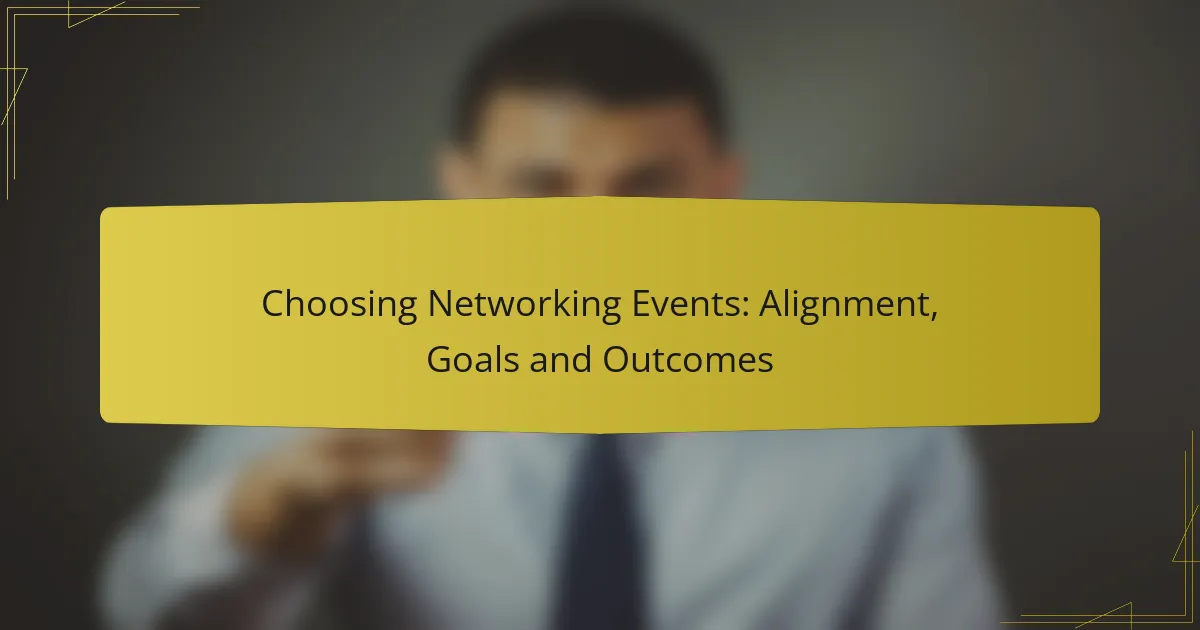Choosing the right networking events is crucial for achieving professional goals and fostering valuable connections. By aligning these events with your specific objectives, you can maximize your time and resources, ensuring that you engage with the right individuals and opportunities. Events that resonate with your interests not only enhance your knowledge but also open doors to potential collaborations and business growth.
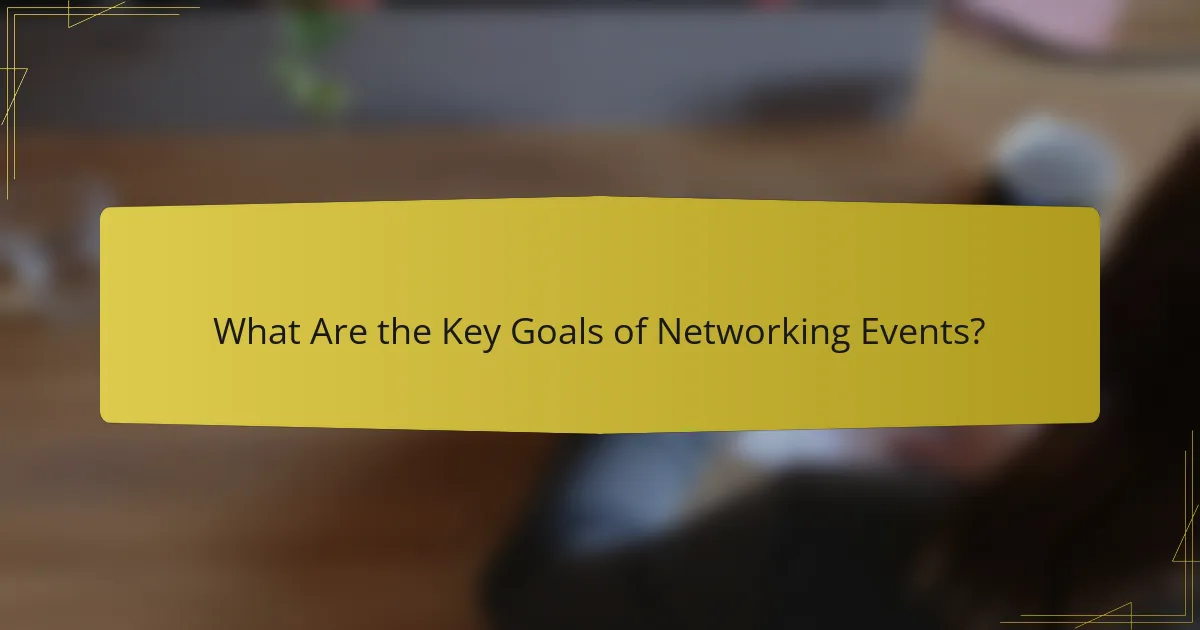
What Are the Key Goals of Networking Events?
Networking events aim to foster connections among professionals, facilitate business opportunities, and enhance knowledge within specific industries. Understanding these goals helps participants maximize their experience and achieve desired outcomes.
Building professional relationships
Building professional relationships is a primary goal of networking events. These gatherings provide a platform for individuals to meet peers, mentors, and industry leaders, fostering connections that can lead to future collaborations.
To effectively build relationships, engage in meaningful conversations, follow up with contacts after the event, and maintain ongoing communication. Remember, quality over quantity is key; focus on nurturing a few strong connections rather than collecting numerous business cards.
Generating business leads
Generating business leads is another crucial objective of networking events. Attendees often seek potential clients or partners who can benefit from their products or services.
To maximize lead generation, prepare a clear elevator pitch and bring promotional materials. Actively listen to others’ needs and tailor your approach to demonstrate how your offerings can address their challenges.
Enhancing industry knowledge
Enhancing industry knowledge is vital for staying competitive. Networking events often feature speakers, panels, or workshops that provide insights into current trends and best practices.
Take notes during presentations and engage in discussions with other attendees to deepen your understanding. Consider asking questions that can lead to further exploration of topics relevant to your field.
Finding potential partners
Finding potential partners is essential for collaboration and growth. Networking events allow businesses to connect with others who share similar goals or complementary services.
Identify individuals or companies that align with your objectives and explore partnership opportunities. Be open to discussing how a partnership could create mutual benefits, such as shared resources or expanded market reach.
Increasing brand visibility
Increasing brand visibility is a key goal for many participants. Networking events offer a chance to showcase your brand to a targeted audience, enhancing recognition and reputation.
Utilize promotional materials, such as banners or branded giveaways, to make a lasting impression. Engage actively in conversations and social media to amplify your presence and connect with a broader audience beyond the event.
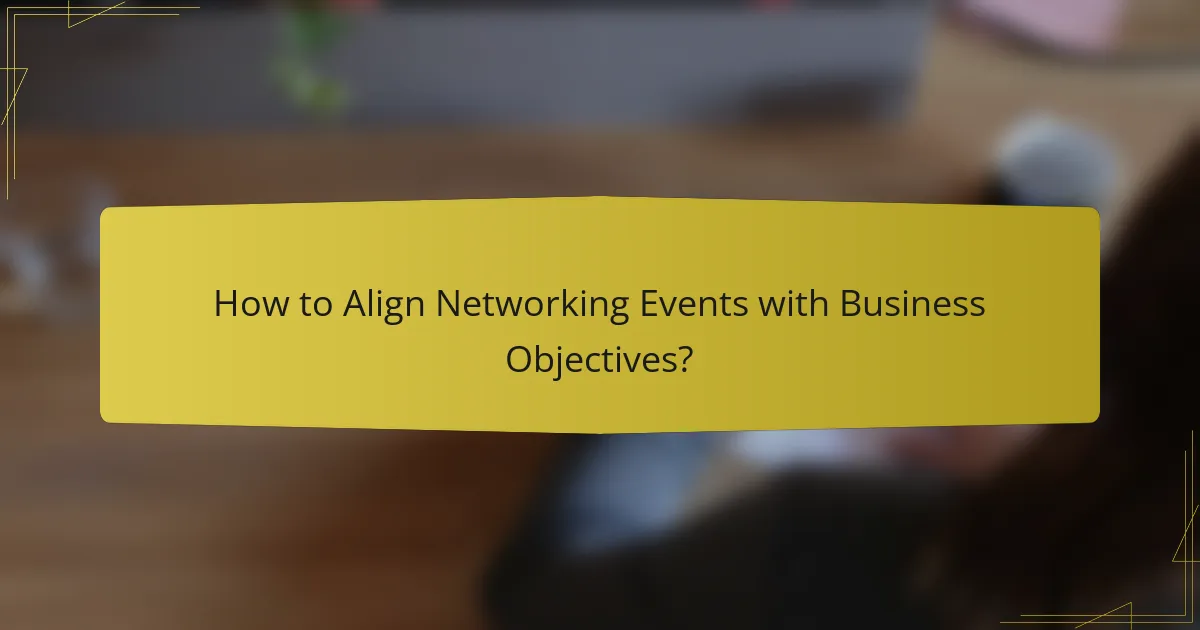
How to Align Networking Events with Business Objectives?
Aligning networking events with business objectives involves understanding your goals and ensuring the events you choose support them. This alignment maximizes the value of your time and resources by connecting you with the right people and opportunities.
Identify target audience
Identifying your target audience is crucial for effective networking. Consider who will benefit most from your products or services and tailor your event selection to reach these individuals. This could include industry professionals, potential clients, or partners.
To refine your audience, create profiles based on demographics, interests, and professional backgrounds. Use tools like LinkedIn to research and connect with these groups, ensuring your networking efforts are focused and productive.
Define measurable outcomes
Defining measurable outcomes helps you evaluate the success of your networking efforts. Establish clear goals, such as the number of new contacts made, partnerships formed, or leads generated. This clarity allows you to track progress and adjust strategies as needed.
Consider using metrics like conversion rates or follow-up engagement to assess the effectiveness of each event. Setting specific targets, such as acquiring five new leads per event, can guide your networking approach and keep you accountable.
Assess event relevance
Assessing the relevance of networking events ensures they align with your business objectives. Research the event’s agenda, speakers, and attendee profiles to determine if they match your goals. Events that focus on your industry or target market are typically more beneficial.
Additionally, consider the format of the event. For instance, workshops may provide hands-on learning opportunities, while conferences might offer broader networking potential. Choose events that provide the best fit for your objectives and desired outcomes.
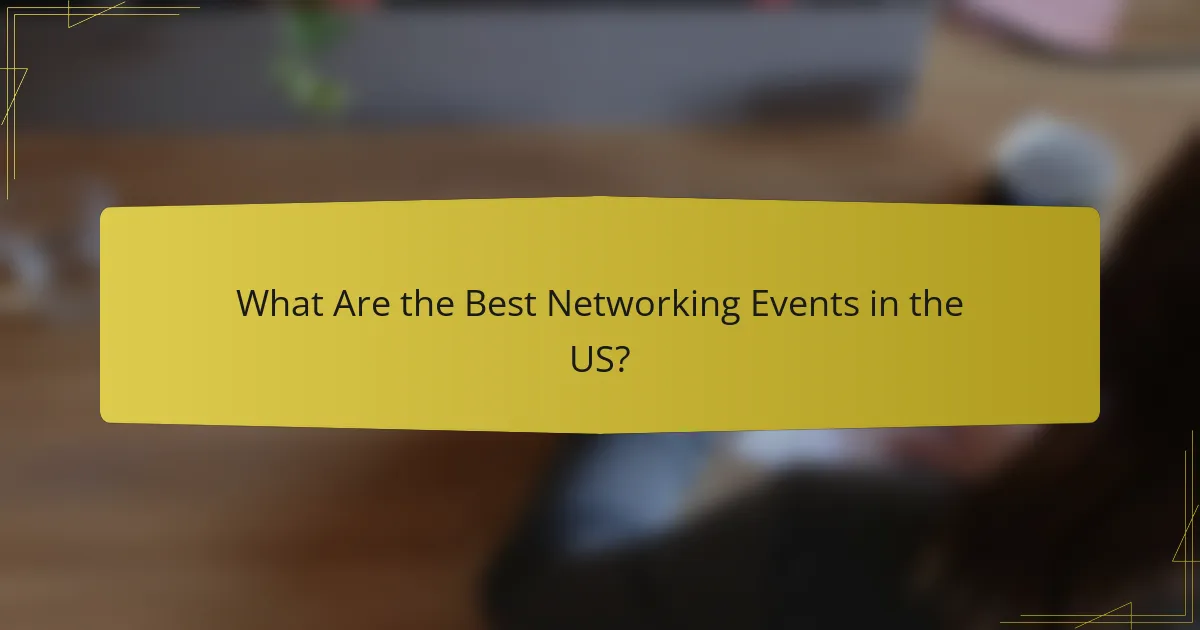
What Are the Best Networking Events in the US?
The best networking events in the US are those that align with your professional goals and offer opportunities to connect with like-minded individuals. Events like TechCrunch Disrupt, South by Southwest (SXSW), and Web Summit provide platforms for innovation, collaboration, and industry insights.
TechCrunch Disrupt
TechCrunch Disrupt is a premier technology conference that attracts startups, investors, and tech enthusiasts. It features a startup battlefield competition, where emerging companies pitch their ideas to a panel of judges, providing a unique opportunity for networking and exposure.
Attendees can engage in various sessions, workshops, and networking events designed to foster connections within the tech community. It’s essential to prepare your elevator pitch and bring business cards to maximize your networking potential.
South by Southwest (SXSW)
South by Southwest (SXSW) is a multifaceted festival that combines music, film, and interactive media, making it a hotspot for networking across various industries. The event draws a diverse crowd, from artists to entrepreneurs, creating a rich environment for collaboration and idea exchange.
To make the most of SXSW, plan your schedule in advance, focusing on panels and sessions relevant to your interests. Engage in conversations during networking events and utilize social media to connect with other attendees before and after the festival.
Web Summit
Web Summit is one of the largest technology conferences globally, held annually in the US. It brings together industry leaders, startups, and investors, offering numerous opportunities for networking and learning about the latest trends in technology and innovation.
To effectively network at Web Summit, attend workshops and breakout sessions that align with your goals. Consider setting up meetings with key contacts in advance, and don’t hesitate to follow up with new connections after the event to nurture those relationships.
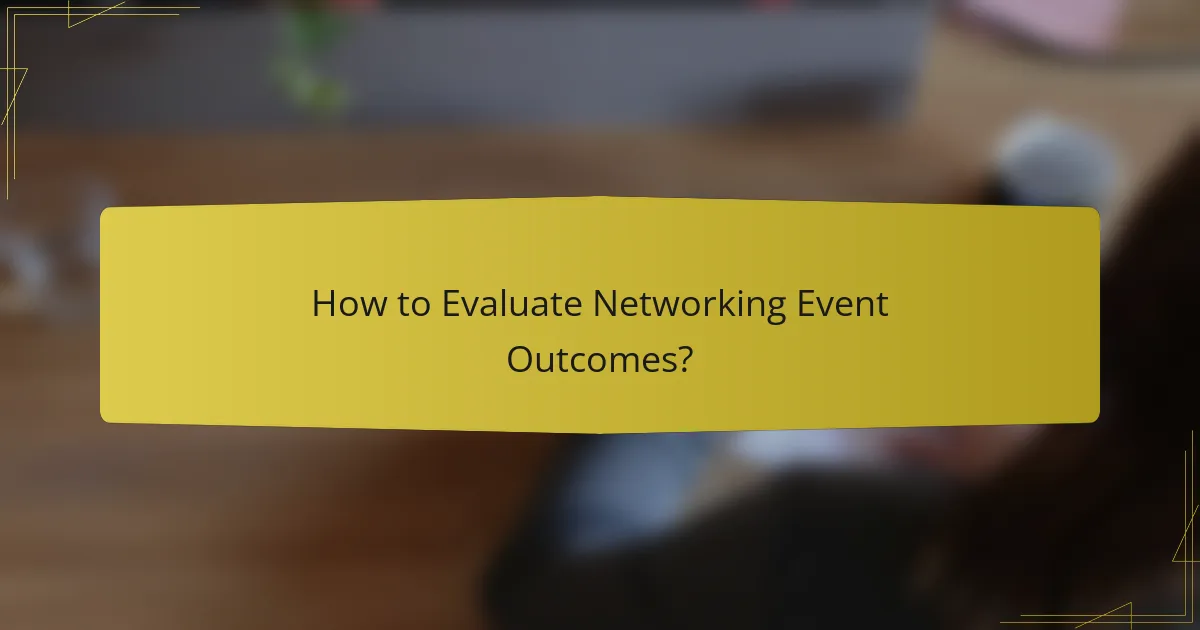
How to Evaluate Networking Event Outcomes?
Evaluating networking event outcomes involves assessing the effectiveness of the event in achieving your goals, such as generating leads or building relationships. Key metrics to consider include participant feedback, conversion rates, and ongoing engagement with contacts made during the event.
Post-event surveys
Post-event surveys are a valuable tool for gathering feedback from attendees about their experiences. These surveys can include questions about the event’s organization, content relevance, and overall satisfaction. Aim for a response rate of at least 30% to ensure meaningful insights.
When designing your survey, consider including both quantitative questions (e.g., rating scales) and qualitative questions (e.g., open-ended feedback). This combination allows you to capture specific areas for improvement while also understanding the overall sentiment of participants.
Lead conversion rates
Lead conversion rates measure how effectively contacts made during the event turn into actual business opportunities. To calculate this, track the number of leads generated and the number that result in sales or partnerships. A typical conversion rate for networking events can range from 5% to 20%, depending on the industry and follow-up strategies.
To improve conversion rates, ensure that you have a clear follow-up plan in place. This may include personalized emails, scheduling meetings, or providing additional resources that align with the interests expressed during the event.
Follow-up engagement
Follow-up engagement refers to the ongoing interactions you have with contacts after the event. This can include emails, phone calls, or social media interactions aimed at nurturing relationships. Effective follow-up can significantly enhance the value derived from networking events.
Establish a timeline for follow-ups, ideally within a week of the event, to maintain momentum. Use a mix of communication methods and tailor your messages based on the conversations you had during the event. Regular engagement can lead to stronger connections and increased opportunities in the future.
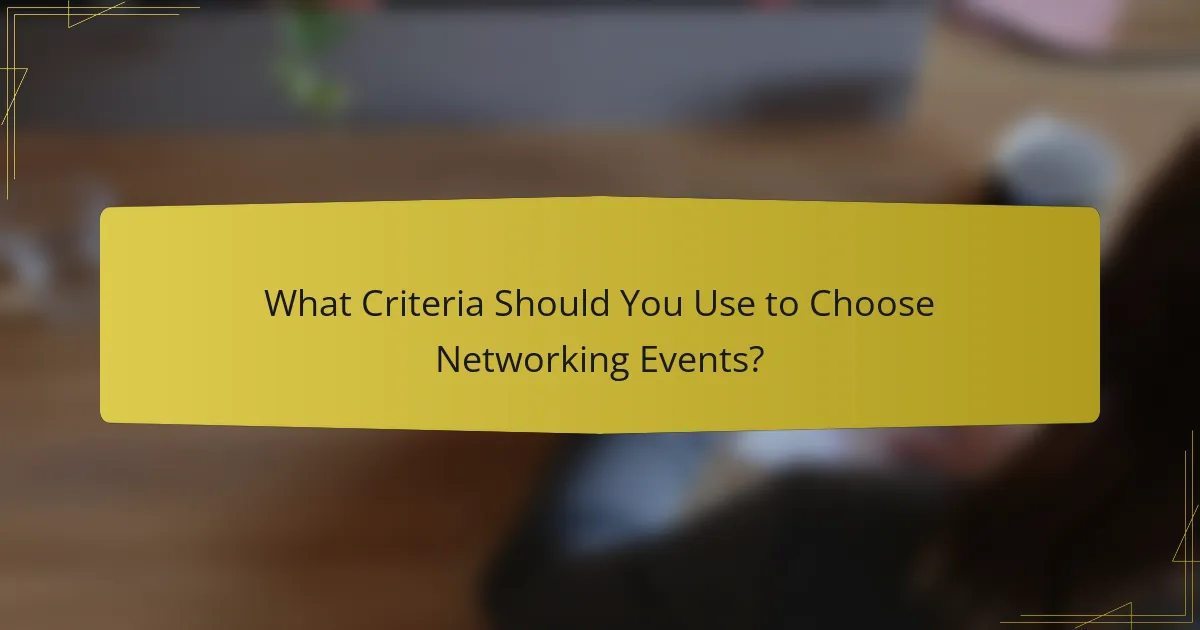
What Criteria Should You Use to Choose Networking Events?
To choose networking events effectively, consider factors such as event size and format, industry relevance, and location accessibility. These criteria will help ensure that the events align with your professional goals and provide valuable connections.
Event size and format
The size and format of a networking event can significantly influence your experience. Smaller events, such as workshops or roundtables, often allow for deeper conversations and stronger connections, while larger conferences may offer a broader range of contacts but less personal interaction.
Consider what you hope to achieve. If you prefer one-on-one discussions, seek out intimate gatherings. Conversely, if you want to maximize exposure, larger events with multiple sessions may be more beneficial.
Industry relevance
Choosing events that are relevant to your industry is crucial for making meaningful connections. Look for gatherings that attract professionals from your field or related sectors, as these will provide opportunities to share insights and explore collaborations.
Research the speakers and attendees to gauge the event’s relevance. Events featuring industry leaders or innovative companies can offer valuable perspectives and networking opportunities that align with your career objectives.
Location accessibility
Location accessibility is an essential factor when selecting networking events. Consider whether the event is held in a convenient area, especially if travel is involved. Events in major cities often attract larger crowds but may require more time and expense to attend.
Evaluate your ability to reach the venue easily, whether by public transport or personal vehicle. If the event is virtual, ensure you have the necessary technology and a quiet space to participate effectively.
